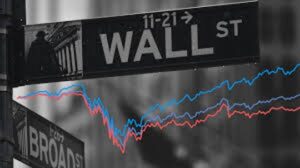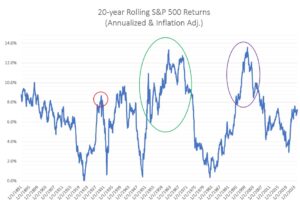The History of Grocery Stores
At 50%, this was the weakest performance for me on any of these quizzes. And of the eight I got right, I guessed at seven of them! Click here.
The History of Grocery Stores
At 50%, this was the weakest performance for me on any of these quizzes. And of the eight I got right, I guessed at seven of them! Click here.
Portrait of Huli Tribesmen
This was the “Readers Choice” winner in Smithsonian Magazine’s 2023 Photo Contest.

The Huli is an indigenous Melanesian tribe in the Hela Province of Papua New Guinea. There are more than 250,000 Huli, making it one of the largest of the 600 tribes in the country.
Re my May 9 Special Issue on “Antisemitism vs. Free Speech and Peaceful Assembly”
“Everything you said is right. Students and professors and non-students should not be able to shut down a public university by threats and intimidation. How do we protect the rights of the non-protestors? And what right does a university president have to negotiate with people calling for murder?” – BS
“I understand your point. Free speech doesn’t have to be the issue. Most of what’s going on can be responded to by the simple issue of property rights. You can say what you want, but you don’t have the right to take control of my property or inhibit my use of my property. When college campuses are the owners of the property, students are basically given an easement to use the campus property, but the easement has limits. Not blocking others’ ability to use the property is one of the limitations. Violating that limitation makes the user a trespasser. Colleges can feel free to remove trespassers, just as any property owner could. That being said, I think we should begin a national discussion on hate speech laws. The last I looked there were 29 countries that have enacted them, including Australia, Canada, Denmark, France, Germany, India, South Africa, Sweden, New Zealand, and the United Kingdom.
“These countries seem to operate just fine, despite some limitations on what their populations can say and do, to the benefit of all the members of these societies who are or would be the victims of hate speech. Have we in the US gone overboard in trying to protect the rights of our citizens to say nasty things? To what and whose benefit? And to whose detriment? What would the real risks vs. rewards be in adopting some hate speech laws in the US? Remember the Declaration of Independence and the right to the ‘pursuit of happiness.’ Would we have a better country if we put more emphasis on that pursuit and less on the right to speak hateful words?” – CA
“The problem with hate speech laws is in the interpretation of what constitutes ‘hate speech.’ In Germany in particular, dissenting opinions are being construed as hate speech and are being silenced. So much for Freedom of Speech! We have seen similar interpretations here in the USA.” – NW
From TM re my essay on Biden’s re-election strategy in the May 17 issue:
“Why on earth are you suggesting how the Democrats could secure the White House in 2024? Is it because you think in pointing out this lunacy you feel it shows up the idiots they are?
“The only reason Trump lost in 2020 was because the SCOTUS put abortion on the ballot. Oh, and some minor election cheating, of course.
“Gavin Newsom is a fascist boob as proven by the total mess in California. How can you suggest that the man who helped destroy our largest state has any business in the White House. Sure, the sheep can be fooled into voting for him, but electability is not the main criteria of the job! Not only is he not qualified for the job, he is the most radical of leftists more interested in appearances and feelings than in fiscal policy and responsibility to protect our freedoms.
“You would really trust this [guy] to run any of your businesses? Elected by the same sheep that gave us Maxine, Kamala, Nadler, Boxer, Schiff, Pelosi, Feinstein, and perhaps 10 to 20 other clowns?
“I rest my case. The financial, political, and ethical values of the above and their cronies and backers will destroy this nation and possibly the world.”
From G re Big Pharma’s control of the market:
“Is there any doubt that Big Pharma controls many of the decisions made in this country? Total immunity from legal actions associated with faulty vaccines isn’t enough. The FDA approved a generic in 2019 for the drug Eliquis. An Eliquis three-month supply is over $1,800 and is one of the most common drugs prescribed to tens of millions of patients in the US. However, you can buy the generic in Canada for a mere fraction of the cost! And here you thought our government was looking out for you. Just pay your taxes, shut up and sit down.
“When will generic Eliquis be available in the US? According to the manufacturers, generics will not be able to hit the market any earlier than April 1, 2028. Watch it get extended. They won’t allow this cash cow to get away.
“In a normally functioning society this would not be tolerated. But then, this is not where we are today.
“End of rant.”
After 40 Years in the Making, Francis Ford Coppola’s Megalopolis Makes Its Debut
Coppola began working on this project in the ‘80s, and it was finally released this year at the Cannes Film Festival. You can watch the trailer here.
If the Biden Management Team Had Only Listened to Me!
As even the Trump-hating New York Times admitted earlier this week, Donald Trump is leading in five of the “crucial battleground” states, according to a new poll conducted by the NYT, Siena College, and The Philadelphia Inquirer.
The race was closer “among likely voters.” But it is the swing states, and the undecided voters, that will determine the outcome of the election.
This is not good news for the Democrats.
When Biden announced that he was going to run again in 2024, he did so because the Democratic leadership felt that his saying so would give the party the sense of stability it needed to do well in the midterm elections. And they did do well. But that doesn’t mean they wanted him to run in 2024. As I said more than a year ago – in January 2023 – I don’t believe the party leaders had any intention of getting him reelected. I don’t believe they thought he had a chance in hell of beating Trump.
I suggested that if they would allow (or force) Biden to resign, it would give them the opportunity to install someone like Gavin Newsom as their candidate instead of facing the impossible task of trying to get Kamala elected.
But instead of listening to me, the Clinton and Obama teams (the teams with the most influence in the Democrat party) launched what they thought was going to be a cleaner and easier way to keep Trump from becoming president again in 2024. It was a three-pronged strategy:
* Take advantage of the economic rebound that took place after the COVID shutdown by attributing it to “Bidenomics.”
* Promote the idea that if Trump is reelected, he will become a “dictator” and put an end to democracy in America.
* Engage in what is now being called “lawfare.”
Bidenomics
In a recent interview with Biden, CNN’s Erin Burnett noted that the cost of buying a home in the United States has doubled and “real income… is actually down since you took office.” She then asked him, “Why should people believe that you will succeed at creating jobs where Trump failed?”
“I’ve never failed!” Biden replied. “I’ve created over 15 million jobs!”
Of course, he didn’t “create” 15 million jobs. Twelve million of them were already there until the government impetuously and recklessly shut down the economy in response to the claims about the virality and lethality of COVID, which were unsupported by the facts then and have since been disproven.
Biden can, however, fairly claim to have “created” 2.9 million jobs through his catch-and-release southern border policy. According to an analysis of data collected by the Census Bureau for the Bureau of Labor Statistics, 2.9 million immigrants (the vast majority of whom are illegal) have found employment since Biden came to office, while 1.2 million native-born Americans lost their jobs.
The Bidenomics strategy was based on a blatant falsehood. And it was shown to be false time and time again on conservative media channels. But the mainstream media didn’t bother reporting on it, thinking, probably correctly, that most Americans wouldn’t be persuaded by it one way or the other, since most Americans know nothing about supply and demand in the labor markets.
What has hurt Biden economically is inflation. The inflation that was the inevitable response to the billions of dollars spent (by Trump initially and then Biden) on shuttering the economy and then marketing and mandating the vaccines, and the other billions spent on our proxy wars with Russia in Ukraine and Israel. The reaction to it among voters generally, and even more so among independent voters, has been to blame Biden. The most recent poll I saw had his approval rating on the economy at 34%.
Trump as Dictator
This strategy, if it can be called a strategy, seemed to make its way into the mainstream media at the beginning of this year. Suddenly, Hillary Clinton and the ladies of The View, as well as other celebrities, were ringing the alarm. If Trump gets back into the Oval Office, they predicted, he will become a “dictator” and put an end to “democracy.” And the world as we know it now will be gone.
Like Bidenomics, this was not a strong idea. It certainly wasn’t going to change the minds of any pro-Trump voters. And as for the undecideds, the voters that are going to determine the winner in November, it doesn’t seem to have had any effect – which makes sense if you think about it.
To the undecided voters, I think the dictator threat came across as desperate and ingenuous. After all, these voters had lived through four years of Trump. If they felt that what he did then was dictatorial and anti-democratic, they would no longer be among the undecided.
Bad News After Bad News
The people that got Biden elected in 2020 are the same people that are behind him now. They know politics. They understand how elections are won and lost. They are smart. They are ruthless. And they are shrewd.
Their strategy worked in 2020 because they recognized that the election was going to depend on fear: the fear of BLM riots, which Trump was promoting, or the fear of COVID, which they took as their cause. By limiting Biden’s exposure to the public to scripted statements (so he wouldn’t have to answer questions spontaneously) and having him and his team in masks whenever they appeared, they were able to take full advantage of the fear of COVID. They played that right.
But the strategies they had in place for 2024 were weaker, and they knew it. And then two things happened that they had not anticipated. Inflation climbed higher than they expected. And on October 7, Hamas began a war with Israel.
The reaction to the Israeli-Hamas war was shocking to many, including me. The instant and enormous support for the Palestinians along with the condemnation of Israel radicalized millions of college students and put the Biden administration in a difficult position. The US commitment to Israel as our primary ally in the Mideast had to be upheld. And yet, all these college students were outraged and, before long, were calling on Biden to withdraw all support from Israel.
To keep the youth vote, Biden would have had to take a strong anti-Israel stance. I haven’t researched this idea, but my guess is that it wouldn’t have had a negative effect on his other constituencies. But it would have hurt him with the 5.8 million Jewish voters, not to mention several million fundamental Christians that have always been strongly pro-Israel.
And that, I think, and only that, is why Biden’s advisors have been having him take this middle path – continuing to provide military aid as one of Israel’s historically strongest allies, while gently urging ceasefires that everyone knows Israel will not listen to and cranking up support for humanitarian aid to the Palestinians.
This strategy seemed to be working until the riots and occupations at US universities and the consequential removal of the protesters turned a good percentage of young voters against him.
That, I believe, is why Biden recently announced that the US would no longer be sending Israel the bigger bombs that it claims are too indiscriminate in their lethality. But this tactic risks upsetting Jewish voters as well as other voters that are committed to the preservation of Israel as a Jewish state.
And if that weren’t bad enough, recent polls have shown that two other “in-the-pocket” voting groups – Blacks and Latinos – are moving away from Biden and the Democrats, largely due to, in my option, the growing influence of conservative Black and Latino “influencers” on social media.
Lawfare
As I said, the people that have been planning and implementing the Biden campaign for 2024 are smart and shrewd and ruthless – as most successful politicians are. In this case, they were prescient enough to develop a Plan B early on, while they were working on Bidenomics and Trump as Dictator and long before the Hamas-Israel war.
Plan B was what conservative commentators have been calling “lawfare” – all the criminal and civil cases that Trump is facing right now. If we can’t get Americans to vote him out of office, they figured, maybe we could put him in jail before the elections or at least keep him in courtrooms all over the country so he can’t campaign properly.
That was the nuclear option. Ignore the Constitution. Give the greenlight to any AG and/or judge interesting in putting Trump on trial and maybe, just maybe, put him in jail.
The process began in earnest about a year ago, with great expectations. But alas, that too seems to be failing. The summary judgement against Trump for overestimating the value of his properties in applying for bank loans – which was meant to empty his campaign war chest – was reduced considerably, and the case itself will almost certainly be reversed on appeal. The case against him for mishandling classified documents – which was meant to start this month (and therefore keep him in court for several more months) – was postponed indefinitely when it was revealed that Special Counsel Jack Smith admitted to tampering with evidence. And the case in NYC by DA Alvin Bragg has so far presented no evidence supporting the charge against Trump. Bragg’s strategy, it seems, rested primarily on the credibility of a stripper and a convicted liar and cheat, both of whom performed poorly this week.
What I’m saying is that the Biden reelection team, the team that did such a great job getting him elected in 2020, should have listened to me when I suggested, more than a year ago, that the right play for them to retain the presidency would be to put the old guy out to pasture and replace him with Gavin Newsom and – to assure victory – Michelle Obama as his running mate.
Had they done that, they would have been ahead in the polls now and not worrying so much about losing the youth vote, the Black vote, the Latino vote, and the Jewish vote.
Aphorisms
I was having lunch with BW, a longtime friend and fellow wanderer through new adventures. He said he liked the quotations I included in the May 1 issue, especially the one from Van Gogh: “I would rather fail than sit idle.”
We got to talking about some of our favorite pithy quotations – i.e., single-sentence aphorisms.
He said that one of his favorites is “It’s never too late, but it’s later than you think.”
I don’t know if I have ever heard it before, but I like it very much. And, of course, it’s especially meaningful as each year passes.
George Eliot said something similar: “It’s never too late to be what you might have been.”
Both quotes spring from the same observation about tempus fugit, but BW’s is better because it’s equally inspirational without making a promise that’s obviously false.
Thinking about this after lunch, I was inspired to give you these:
10 One-Sentence Quotations Worth Memorizing
1. “Whether you think you can or you think you can’t, you’re right.” – Henry Ford
2. “A man’s reach should exceed his grasp.” – Robert Browning
3. “We must let go of the life we have planned, so as to accept the one that is waiting for us.” – Joseph Campbell
4. “No matter what people tell you, words and ideas can change the world.” – Robin Williams
5. “Life can only be understood backwards, but it must be lived forwards.” – Soren Kierkegaard
6. “Anger is an acid that can do more harm to the vessel in which it is stored than to anything on which it is poured.” – Mark Twain
7. “Politics is war without bloodshed, while war is politics with bloodshed.” – Mao Zedong
8. “Jealousy is the tribute mediocrity pays to genius.” – Fulton J. Sheen
9. “Be happy for this moment; this moment is your life.” – Omar Khayyám
10. “Whatever you are, be a good one.” – Abraham Lincoln

The Retirement Question
“How did you know it was time to retire?”
I was asked that question twice last week… once by a reader (IK) and once by
the CEO of a Japanese publishing company that is doing some kind of documentary about me and how I built my wealth.
But I am not the right person to ask, because I have tried and failed to retire four times in my life.
First, when I was 39 and had accumulated a net worth of $10 million, which I thought would be enough to pay for my “needs” for the rest of my life.
But I was wrong. The problem was that, as I was increasing my net worth from negative to $10 million, I had bought a much bigger home and had become accustomed to a more costly (but not necessarily more enjoyable) lifestyle, where I needed about $500,000 a year to cover my expenses.
I had a choice. I could sell my house, move into a smaller one in a less expensive neighborhood, and be frugal with my money. Or I could go back to work.
So, I went back to work when I was 40, starting several small side businesses with the goal of producing enough in extra cash flow to support my new lifestyle, and was able to hit that goal by the time I was 49.
Now, I thought, I can retire. But by then I had started three non-profits that were great fun but needed an endowment to fully fund their work.
Realizing that my now net worth was not going to be enough, I went back to work at my old business full-time.
Ten years later, when I was 59, my net worth had grown more than I expected it to. But by then, the cost of my non-profits had tripled (because I couldn’t stop myself from expanding them). And I realized that, once again, I would have to forgo my dream of completely retiring.
I drastically reduced the hours I would normally have to work by hiring CEOs, CFOs, and COOs to take care of the day-to-day management of my side businesses, which left me free to do all the things one is supposed to do in retirement – like play golf, take cruises, and write books.
I did that, and it seemed to be working quite well. Except I discovered that golf was a masochist’s game, and that the books I was writing were about entrepreneurship and wealth building… which got me back into the mood of starting new businesses.
So, by the time I was 69, I had a net worth that was more than what I needed to cover the costs of my three principal non-profits, plus enough for a comfortable retirement. There was no good excuse for me to keep working. And yet, I could not bring myself to give up my regular involvement in several of my businesses – particularly those that were in their early stages of growth. On top of that, I had become fully entrenched in writing my blog.
So here I am at 73, and still working 50- to 70-hour weeks. The only difference is that now a large portion of my daily work is for the non-profits and, thus, essentially unpaid.
The good news is that my boys are gradually taking over the running of my businesses, projects, and charities – at a rate that should allow me to truly retire in 2025. At least, that’s the plan.
So, right about now I’m sure you are thinking, “Thanks for nothing. You never answered the ‘How did you know it was time to retire?’ question.”
And you are right. As I said, I have tried and failed to retire four times in my career. Twice because I needed more income than I had expected to need, and twice because I simply didn’t want to stop working.
So, that’s not “nothing.” There is a whole lot to be learned by thinking about my failed attempts.
The most important thing I can tell you is this: If you don’t like the work you are doing, if you don’t mostly love the work you are doing, you should either retire the moment you have enough money to do it… or you should find a way to edge yourself into a role in your industry that can provide you with so much enjoyment that you won’t want to retire.
James Clear on Finding Happiness
“You will never find one answer to what makes you happy. There are many answers, and they change based on your current state. People need to relax, but if all you do is sit on the beach, it gets old. People find meaning in work, but if all you do is work, it gets exhausting. People benefit from exercise, but if all you do is exercise, it gets unhealthy. Happiness will always be fleeting because your needs change over time. The question is: What do you need right now?”

Chart of the Week: When to Buy Stocks
One thing any experienced salesperson knows is that, despite what we like to think, people make the decision to buy things based on their emotions rather than their reason. And that is true with buying stocks. The reason individual investors, on average and over the long term, earn less than one-third of the average stock market investor, it is because they are motivated to buy from greed and sell from fear. This week’s chart, as Sean explains, gives you a vivid way of understanding that and how it relates to the investing strategy we use. – MF
It’s often said that the stock market is not the economy, and the economy is not the stock market.
Scholarship backs this up. A study titled “Is Economic Growth Good for Investors?” found that, across countries and stock markets, GDP growth is bad for long-term stock returns. Conversely, GDP declines are typically followed by very good periods for stocks.
But I learned this years ago when I started asking myself a simple question: What economic conditions are best for purchasing stocks?
There’s one chart that taught me more about the relationship between economics and stock returns than any other… and it’s not one you’d expect.
I’m talking about the chart of rolling 20-year stock market returns.

This chart shows how the S&P 500 performed over previous 20-year periods. For example, in the early 1960s, it shows how, for the previous 20 years, the return of the market was as high as 15% per year on average.
If you want to know what economic conditions lead to high stock returns, just pull up this chart, find the spikes in returns, and then ask yourself: “What happened 20 years before those spikes?”
For example, take a look at the spike in 1928 and 1929 (the red circle on the chart). Why were returns so good for the 20 years leading up to that one?
If you look back, what you see is that the US economy was doing terribly!
The US moved in and out of five recessions between 1899 and 1911. There was a recession before AND after World War I.
So what should you have done during those times when business activity and trade dropped by double digits?
Buy stocks.
Let’s take a look at the mid-1950s and 1960s (the green oval on the chart), when average stock market returns reached nearly 14% per year.
What happened 20 years before that?
The Great Depression. World War II. Some of the biggest stock market collapses in history.
So what should you have done when the world was falling apart?
Buy stocks.
Or how about the 1990s (the purple oval on the chart), when stock market returns reached unprecedented heights?
Go 20 years before that, when the US was crippled by stagflation, supply shortages led to lines at gas stations, the economy rolled in and out of recessions, and interest rates reached as high as 20%!
Guess what asset would have made you wealthier than any other while all of that was happening?
Stocks.
Baron Rothschild, the 18th century banker, famously said, “Buy when there’s blood in the streets, even if the blood is your own.”
I have only one problem with that advice: Nobody ever wants to actually follow it. In the moment, they get too scared.
Business is cyclical. So are investment patterns. And the best time to get in is usually at the bottom. Not the top.
So here’s what I want you to do.
The next time you read a report about all the coming economic catastrophes…
The next time you see evidence of an impending recession, or a “dead decade” in the stock market, or an epic market crash…
I want you to say, “Great. I can’t wait to buy more stocks when that finally happens.”
Because that’s the mindset that Mark has adopted with his Legacy Portfolio of stocks – a mindset that will allow you to actually profit from the inevitable up-and-down cycles of the economy and the stock market.
– Sean MacIntyre
Check out Sean’s YouTube channel here.

The Decline of the Convertible
Something is going on in America that is not especially newsworthy, but it is intriguing. Because it must reflect some sort of larger social or economic change that perhaps is widely known.
Did you know that…
* In 2004, Americans bought 315,000 convertibles.
* In 2010, that number was down to 144,000.
* Between March 2023 and February 2024, sales plunged to 70,000.
* Today, they comprise less than one-half a percent of car purchases.
Meanwhile, purchases of SUVs have been climbing. What’s going on?
One unconvincing explanation: David Lucsko, a car historian, says automakers now design vehicles for consumers to seal themselves in. “I think the car has become more and more a cocoon where we go to be isolated from the world,” he says. “Driving a convertible means being exposed to the world.”
Another unconvincing explanation: Convertibles are often seen as easy targets for car theft. A thief can easily remove items out of a convertible or access the ignition if the top is down.
I suppose the real question this brings up is this: Why am I spending a half-hour of a beautiful, sunny, Florida day trying to figure this out?